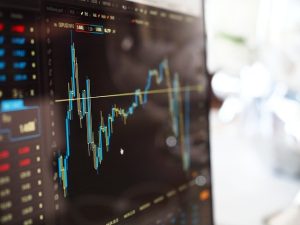Hispanic-American banks contain the second biggest gathering of Minority Depository Institutions (MDIs) perceived by the Federal Deposit Insurance Corporation (FDIC), second just to the 72 Asian American-claimed banks. These two classes are likewise the lone ones to have banks that are settled in U.S. island territories.1
As has been the situation with Black-claimed, Asian American-possessed, and Native American-claimed banks, Hispanic American-claimed banks can give a pivotal course out of neediness and an option in contrast to more hazardous monetary administrations, for example, payday credits, that are regularly showcased toward the most monetarily vulnerable.2
This article utilizes the expression “Hispanic American-claimed” in the expansive sense that we have utilized it for Black-possessed, Asian American-claimed and Native-American possessed banks, perceiving that investors own revenue driven banks. Also, in spite of the fact that Investopedia inclines toward the identifier Latinx, this article utilizes the expression “Hispanic American” to distinguish these foundations since that is the manner by which the FDIC’s information recognizes them. Note furthermore that, albeit a few sources referred to in this article utilize Hispanic and Latino conversely to allude to one gathering, these terms are not synonymous.3
KEY TAKEAWAYS
Today there are 30 Hispanic American-possessed banks in the United States. All things considered, these organizations have around $128.075 billion in resources.
Of the 30 Hispanic American-possessed banks, 23 have 51% or a greater amount of their democratic stock claimed by Hispanic American people, while seven have a dominant part of Hispanic American chiefs on their sheets and serve networks that are dominatingly Hispanic American.
Banco Popular de Puerto Rico is the biggest Hispanic American-possessed bank in the U.S., with $55.26 billion in absolute resources.
What Is a Minority Depository Institution?
There are right now 5,033 business banks and reserve funds establishments protected by the FDIC in the United States.4 A monetary organization might be viewed as a MDI by the FDIC in the event that it is “…a government safeguarded storehouse foundation for which (1) 51 percent or a greater amount of the democratic stock is claimed by minority people; or (2) a larger part of the directorate is minority and the local area that the foundation serves is transcendently minority. Proprietorship should be by U.S. residents or perpetual legitimate U.S. occupants to be included in deciding minority proprietorship.” Of the 30 Hispanic American-possessed banks, 23 fall into the previous class, while the excess seven fall into the latter.1
At present, there is no exhaustive posting of each Hispanic American-claimed credit association in the U.S. The Juntos Avanzamos credit association assignment program has recognized 108 part possessed loaning establishments across 26 expresses that emphasis on the monetary requirements of Hispanic Americans and foreigners. Notwithstanding, this assignment doesn’t ensure that the association being referred to is a Hispanic American-claimed credit union.5
Why Hispanic American-Owned Banks Are Important
Its an obvious fact that approaching a solid monetary foundation is vital for a person’s monetary prosperity. Outside of setting aside cash, banks likewise normally give methods for financing bigger buys, for example, by offering advances or giving Mastercards. Some considerably offer abundance the executives benefits just as contributing freedoms, including retirement plans like IRAs. These advantages could clarify why, as indicated by a 2019 study from the FDIC, just 5.4% of U.S. families were unbanked—the most reduced level in the study’s history.6
Notwithstanding, this doesn’t imply that banking is similarly available to all Americans. A similar report found that 12.2% of Hispanic family units were unbanked. While that number has been diminishing over the long run, it’s a significantly higher rate than the 2.5% of White family units and simply second-most minimal to the 13.8% of Black families. Also, this doesn’t imply that the leftover 87.8% of Hispanic family units were as a rule satisfactorily served.7 Another 2019 overview, this time from the Board of Governors of the Federal Reserve System, discovered that 22% of Hispanic Americans were underbanked, contrasted with a large portion of that number for White Americans.8
This can get considerably more muddled when you consider movement status, which isn’t helped by how minimal contemporary exploration there is here. A recent report found that up to half of late Hispanic outsiders were underbanked. This is simply considering recorded outsiders, as undocumented migrants might be naturally hesitant to self report—however a 2016 snowball testing found that 81% of members were underbanked as well.910
Hispanic laborers additionally have the most reduced middle week after week pay when contrasted with Black, White, and Asian people, while reports as later as 2016 have shown that migration status and destitution are frequently intently associated.1112 Banks have been refered to as a basic advance in getting away from neediness, so for what reason do such countless individuals remain unbanked or underbanked?13
Perhaps the most generally refered to reasons isn’t having sufficient assets to meet least adjust requirements.14 For the situation of workers, a 2011 report found that they regularly face language hindrances, political pressing factor, monetary proficiency issues, and, for undocumented settlers, worries of government identification.15
Therefore, monetary organizations that work with, are worked by, and comprehend the remarkable financial circumstances of both local and unfamiliar brought into the world Hispanic Americans are normally going to be better ready to handle these difficulties.
Hispanic American-Owned Banks Breakdown
Of the 30 Hispanic American-claimed banks, a third have activities in Florida, while 40% are situated in Texas.1 Below is an in order rundown of all the Hispanic American-possessed banks in the U.S.
BAC Florida Bank
Initially established in 1973 as Popular Bank of Hialeah, the organization embraced its present name 26 years after the fact. BAC Florida Bank offers monetary types of assistance to customers in both the U.S. also, Latin America.16 In late 2020, it turned out to be important for the Bradesco Organization, one of the biggest monetary gatherings on the whole of Brazil.17
Branches: Miracle Mile Office (Coral Gables, Fla.)17
ATMs: N/A
States: Florida17
Administrations: Personal (checking, reserve funds, and so forth) and business (money the executives, credit offices, and so on) banking, land financing (private and business), just as abundance the board and investments18
Resources: $2.67 billion1
Accessibility: Online and block and-mortar17 19
Banco Popular de Puerto Rico
Coordinated in 1893, Banco Popular de Puerto Rico (BPPR) is presently the biggest monetary organization altogether of Puerto Rico, notwithstanding working in the U.S. Virgin Islands, the British Virgin Islands, and New York City.20 BPPR is an auxiliary of Popular Inc., which is additionally the parent organization of its territory U.S. subsidiary Popular Bank.21
Branches: 174 in Puerto Rico22
ATMs: 645 complete in Puerto Rico just as the U.S. and British Virgin Islands22
States: New York20
Administrations: Accounts (checking, reserve funds, and so on), administrations (finance, assortment, and so on), Mastercards, individual (contract, auto, and so forth) and (business advances, StartUp Popular Program, and Paycheck Protection Program) advances, individual (property, travel, and so on) and business (common obligation, life inability, and so on) protection, speculations (IRAs, institutional administrations, and so on), and Popular One incorporated administrations platform23 24 25
Resources: $55.26 billion1
Accessibility: Online and block and-mortar22 26
Banesco USA
Banesco USA is a piece of Banesco International, a global association of monetary organizations across 15 nations. Initially established in 2006 as BBU Bank, Banesco USA converged with Banesco International Corp in 2010, giving it a traction in Puerto Rico.27 28
Branches: Aventura Branch (Aventura, Fla.), Brickell Branch (Brickell, Fla.), Coral Gables Branch (Coral Gables, Fla.), Doral Branch (Doral, Fla.), Hialeah Branch (Hialeah, Fla.), and Hato Rey Branch (Hato Rey, Puerto Rico)29
ATMs: Any ATMs in the Allpoint network29
States: Florida29
Administrations: Accounts (checking, investment funds, and currency market), shopper and business credits, money the board arrangements, dealer administrations, BaneSmart CD30 31
Resources: $1.99 billion1
Accessibility: Online and block and-mortar29 32
Bank of Grand Lake
Set up in 2005 as the Bank of Grove, it is as of now the lone privately possessed and worked bank in Grand Lake. A year preceding opening its second area in 2018, the association changed its name to the Bank of Grand Lake.33
Branches: Grove Branch (Grove, Okla.) and Langley Branch (Langley, Okla.)34
ATMs: Grove Branch (Grove, Okla.) and Langley Branch (Langley, Okla.)35
States: Oklahoma34
Administrations: Personal (checking, investment funds, and so forth) and business (checking, currency market, and business credits) banking36
Resources: $210.19 million1
Accessibility: Online and block and-mortar34 37
Bank of South Texas
The Bank of South Texas has been serving the Rio Grande Valley people group since it was first established in 1986.38 Although initially centered around giving fundamentally rural credits, extra items and administrations were added to meet the developing requirements of the nearby community.39
Branches: Hebbronville Branch (Hebbronville, Texas), Kingsville Branch (Kingsville, Texas), McAllen Branch (McAllen, Texas), Mission Branch (Mission, Texas), and Pharr Branch (Pharr, Texas)40
ATMs: Hebbronville Branch (Hebbronville, Texas), Kingsville Branch (Kingsville, Texas), McAllen Branch (McAllen, Texas), Mission Branch (Mission, Texas), and Pharr Branch (Pharr, Texas), notwithstanding any ATMs in the Allpoint network40
States: Texas40
Administrations: Personal (checking, reserve funds, and so on) and business (checking, credits, and so on) banking just as different administrations (charge card, overdr


